Themed collection Battery science and technology – powered by chemistry

Strategies towards enabling lithium metal in batteries: interphases and electrodes
Perspective on recent improvements in experiment and theory towards realizing lithium metal electrodes with liquid electrolytes.
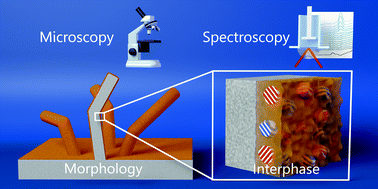
Energy Environ. Sci., 2021,14, 5289-5314
https://doi.org/10.1039/D1EE00767J
Aqueous zinc ion batteries: focus on zinc metal anodes
This perspective discusses the main issues with Zn anodes and highlights recent strategies to improve their performance in aqueous zinc ion batteries.
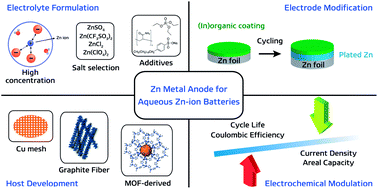
Chem. Sci., 2020,11, 2028-2044
https://doi.org/10.1039/D0SC00022A
Hollow multishelled structures revive high energy density batteries
This Focus article clarifies that hollow multishelled structure-based electrode is indispensable to realize practically high energy density of rechargeable batteries.
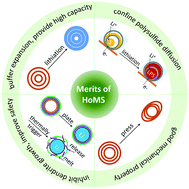
Nanoscale Horiz., 2020,5, 1287-1292
https://doi.org/10.1039/D0NH00311E
High-entropy energy materials: challenges and new opportunities
An overview of high-entropy materials for energy applications, including H2 catalysis and storage, CO2 conversion, O2 catalysis and electrochemical energy storage, is given and the challenges and opportunities within this field are discussed.
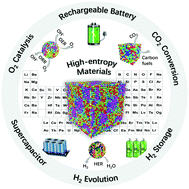
Energy Environ. Sci., 2021,14, 2883-2905
https://doi.org/10.1039/D1EE00505G
Potassium-ion batteries: outlook on present and future technologies
The limited resources and uneven distribution of lithium stimulate strong motivation to develop new rechargeable potassium-ion batteries that use alternative charge carriers.
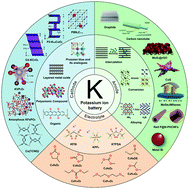
Energy Environ. Sci., 2021,14, 2186-2243
https://doi.org/10.1039/D0EE02917C
Biomass-based materials for green lithium secondary batteries
This review summarizes the employment of different biomass materials for green lithium secondary batteries.
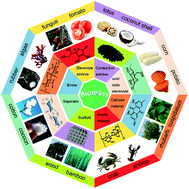
Energy Environ. Sci., 2021,14, 1326-1379
https://doi.org/10.1039/D0EE02848G
Functional separators towards the suppression of lithium dendrites for rechargeable high-energy batteries
This review summarizes the recent advances of functional separators towards the suppression of lithium dendrites in lithium metal batteries.
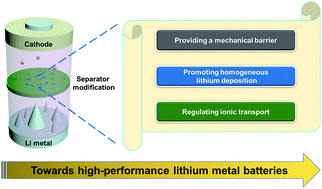
Mater. Horiz., 2021,8, 12-32
https://doi.org/10.1039/D0MH01167C
The success story of graphite as a lithium-ion anode material – fundamentals, remaining challenges, and recent developments including silicon (oxide) composites
This review provides a comprehensive overview about the “hidden champion” of lithium-ion battery technology – graphite.

Sustainable Energy Fuels, 2020,4, 5387-5416
https://doi.org/10.1039/D0SE00175A
Towards high-performance solid-state Li–S batteries: from fundamental understanding to engineering design
This review article provides a comprehensive overview of solid-state Li–S batteries from the viewpoints of fundamental study and engineering design.
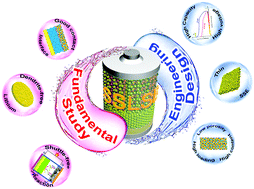
Chem. Soc. Rev., 2020,49, 2140-2195
https://doi.org/10.1039/C9CS00635D
Guidelines and trends for next-generation rechargeable lithium and lithium-ion batteries
This review article summarizes the current trends and provides guidelines towards next-generation rechargeable lithium and lithium-ion battery chemistries.
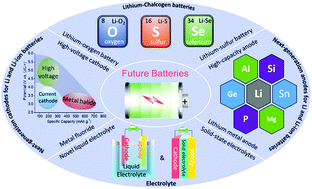
Chem. Soc. Rev., 2020,49, 1569-1614
https://doi.org/10.1039/C7CS00863E
Materials chemistry for rechargeable zinc-ion batteries
This tutorial review presents an introduction to the fundamentals, challenges, recent advances and prospects of rechargeable zinc-ion batteries.
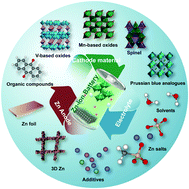
Chem. Soc. Rev., 2020,49, 4203-4219
https://doi.org/10.1039/C9CS00349E
Improving high rate cycling limitations of thick sintered battery electrodes by mitigating molecular transport limitations through modifying electrode microstructure and electrolyte conductivity
Mitigating molecular transport limitations in thick sintered battery electrodes with electrolyte and microstructure design.
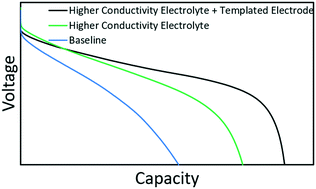
Mol. Syst. Des. Eng., 2021,6, 708-712
https://doi.org/10.1039/D1ME00082A
Realizing poly(ethylene oxide) as a polymer for solid electrolytes in high voltage lithium batteries via simple modification of the cell setup
Cell failure of polymer electrolytes is rather the result of short circuits instead of assumed electrolyte oxidation. A spacer with a constant and defined distance can avoid this failure, thus realize a benchmark system for a more systematic R&D.
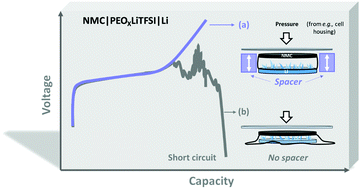
Mater. Adv., 2021,2, 3251-3256
https://doi.org/10.1039/D1MA00009H
An extended carbonyl-rich conjugated polymer cathode for high-capacity lithium-ion batteries
A novel polymer with an extended π-conjugated structure (PPh-PTO) can show a delocalized electronic distribution and achieve a higher voltage, excellent cycle life, and good rate capabilities.
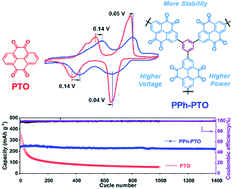
J. Mater. Chem. A, 2021,9, 2700-2705
https://doi.org/10.1039/D0TA11648C
Characterization of mechanical degradation in an all-solid-state battery cathode
In this work, we visualize and quantify the microstructure evolution in the composite electrode after solid-state battery (SSB) cycling. The observed severe mechanical degradation highlights the importance of mechanical considerations in SSB design.
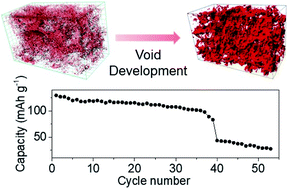
J. Mater. Chem. A, 2020,8, 17399-17404
https://doi.org/10.1039/D0TA06985J
Pressure effects on sulfide electrolytes for all solid-state batteries
All-solid-state batteries exhibit good performance even at low operating stack pressure when soft electrode materials are used.
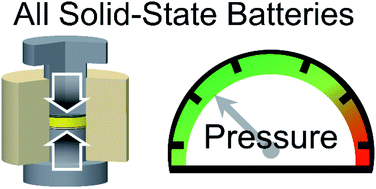
J. Mater. Chem. A, 2020,8, 5049-5055
https://doi.org/10.1039/C9TA12889A
A highly reversible neutral zinc/manganese battery for stationary energy storage
A highly reversible neutral zinc/manganese battery with two-electron transfer properties.
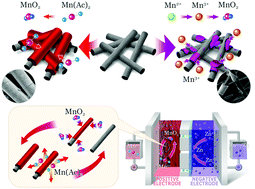
Energy Environ. Sci., 2020,13, 135-143
https://doi.org/10.1039/C9EE03702K
A highly Li+-conductive HfNb24O62 anode material for superior Li+ storage
Highly Li+-conductive HfNb24O62 is explored as a new intercalation-type anode material for fast-charging, large-capacity, safe and durable Li+ storage.

Chem. Commun., 2020,56, 619-622
https://doi.org/10.1039/C9CC07447C
A redox targeting-based material recycling strategy for spent lithium ion batteries
With the retirement of a massive amount of end-of-life Li-ion batteries, proper disposal of the hazardous wastes and cost-effective valorization of useful materials have become increasingly pressing and have attracted extensive attention worldwide.
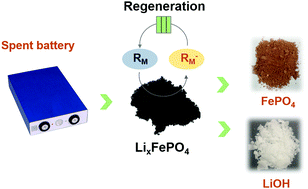
Energy Environ. Sci., 2019,12, 2672-2677
https://doi.org/10.1039/C9EE01478K
Non-concentrated aqueous electrolytes with organic solvent additives for stable zinc batteries
Involvement of dimethyl carbonate and trifluoromethanesulfonate anions in a hybrid aqueous electrolyte enables the formation of a new Zn2+-solvation structure and a ZnF2–ZnCO3-rich interphase that stabilizes the Zn battery chemistry.
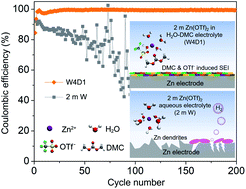
Chem. Sci., 2021,12, 5843-5852
https://doi.org/10.1039/D0SC06734B
Proton-conductive coordination polymer glass for solid-state anhydrous proton batteries
Melt-quenched coordination polymer glass shows exclusive H+ conductivity (8.0 × 10−3 S cm−1 at 120 °C, anhydrous) and optimal mechanical properties (42.8 Pa s at 120 °C), enables the operation of an all-solid-state proton battery from RT to 110 °C.
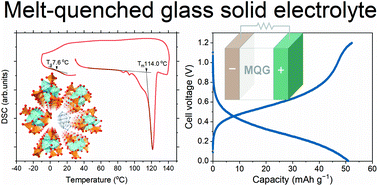
Chem. Sci., 2021,12, 5818-5824
https://doi.org/10.1039/D1SC00392E
Homogenous metallic deposition regulated by defect-rich skeletons for sodium metal batteries
Sustainable carbon skeletons with rich defects and negligible pores are applied to induce the uniform metallic sodium deposition for stable sodium metal batteries.
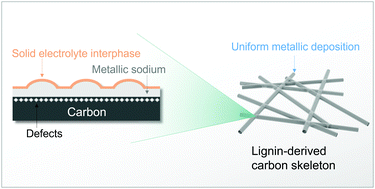
Energy Environ. Sci., 2021,14, 6381-6393
https://doi.org/10.1039/D1EE01346G
Concentrated dual-cation electrolyte strategy for aqueous zinc-ion batteries
A dual-cation concentrated electrolyte has been developed to enable a stable Zn anode and a vanadium-oxide-based cathode for efficient aqueous Zn-ion batteries.
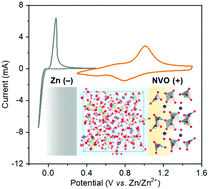
Energy Environ. Sci., 2021,14, 4463-4473
https://doi.org/10.1039/D1EE01472B
Nanostructured intermetallic InSb as a high-capacity and high-performance negative electrode for sodium-ion batteries
The paper reports the performance of a nanostructured InSb alloy as a promising negative electrode for sodium-ion batteries.
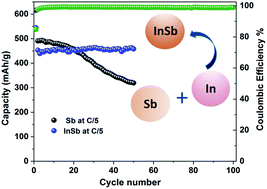
Sustainable Energy Fuels, 2021,5, 3825-3835
https://doi.org/10.1039/D1SE00386K
Tuning the performance of a Mg negative electrode through grain boundaries and alloying toward the realization of Mg batteries
Tilt grain boundaries, side surfaces (with respect to the (0001) surface) and a proper doping/alloying, such as Ca, in Mg electrode can accelerate the dissolution of the Mg atoms and result in higher current density.
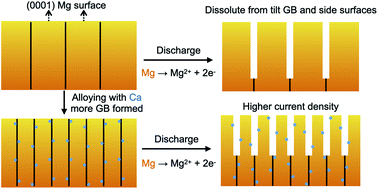
J. Mater. Chem. A, 2021,9, 15207-15216
https://doi.org/10.1039/D1TA02419A
Lithium ion battery recycling using high-intensity ultrasonication
Electric vehicle battery electrodes are delaminated ultra-fast using high-powered ultrasound, separating active materials from the foil current collectors.
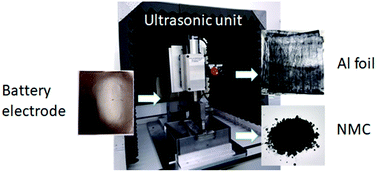
Green Chem., 2021,23, 4710-4715
https://doi.org/10.1039/D1GC01623G
A flame-retardant polymer electrolyte for high performance lithium metal batteries with an expanded operation temperature
The well-designed flame-retardant polymer electrolyte greatly improves the safety and cycle life of high energy density lithium metal batteries.
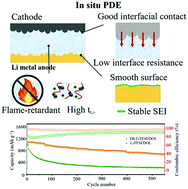
Energy Environ. Sci., 2021,14, 3510-3521
https://doi.org/10.1039/D1EE00049G
Zinc/selenium conversion battery: a system highly compatible with both organic and aqueous electrolytes
Both organic and aqueous zinc–selenium batteries deliver competitive capacity with a higher plateau voltage than traditional zinc ion batteries.
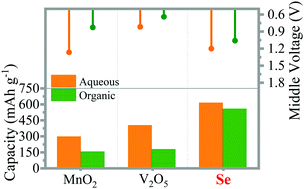
Energy Environ. Sci., 2021,14, 2441-2450
https://doi.org/10.1039/D0EE02999H
Cation ordered Ni-rich layered cathode for ultra-long battery life
The observed ultra-long battery life of 8000 cycles demonstrated by the Ni-rich compositionally graded NCM cathode stems mainly from the cation ordered structure.

Energy Environ. Sci., 2021,14, 1573-1583
https://doi.org/10.1039/D0EE03774E
Co-construction of sulfur vacancies and carbon confinement in V5S8/CNFs to induce an ultra-stable performance for half/full sodium-ion and potassium-ion batteries
Sulfur defective V5S8/CNFs is synthesized by an electrospinning method, followed by sulfuration treatment. The obtained composite exhibits attractive capacities and ultra-stable cycling performances when using as anode materials for sodium-ion and potassium-ion batteries.
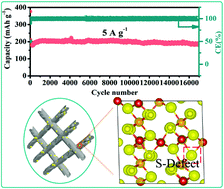
Nanoscale, 2021,13, 5033-5044
https://doi.org/10.1039/D0NR08788B
Sulfur-assisted large-scale synthesis of graphene microspheres for superior potassium-ion batteries
Large-scale low-cost preparation methods for high quality graphene are critical for advancing graphene-based applications in energy storage, and beyond.
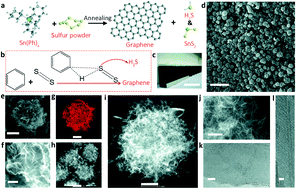
Energy Environ. Sci., 2021,14, 965-974
https://doi.org/10.1039/D0EE03203D
High-performance all-organic aqueous batteries based on a poly(imide) anode and poly(catechol) cathode
All-organic aqueous batteries based on universal poly(imide) anodes and poly(catechol) cathodes with tunable cell voltage are reported by exploiting different charge carriers (Li+, Zn2+, Al3+, and Li+/H+). A full-cell achieves the highest energy/power density of 80.6 W h kg−1/348 kW kg−1 in Li+/H+.
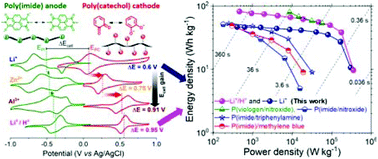
J. Mater. Chem. A, 2021,9, 505-514
https://doi.org/10.1039/D0TA09404H
Antimony alloying electrode for high-performance sodium removal: how to use a battery material not stable in aqueous media for saline water remediation
The high sodium uptake capacity of antimony can be used for high performance water desalination by using a ceramic ion-exchange membrane.
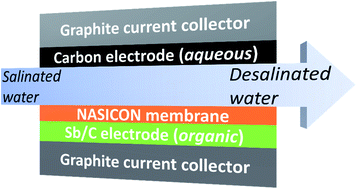
J. Mater. Chem. A, 2021,9, 585-596
https://doi.org/10.1039/D0TA09806J
A chemical map of NaSICON electrode materials for sodium-ion batteries
Using first-principles calculations, we chart the chemical space of 3d transition metal-based NaSICON phosphates with the formula NaxMM′(PO4)3 (with M and M′ = Ti, V, Cr, Mn, Fe, Co and Ni). Novel NaSICON compositions were revealed.
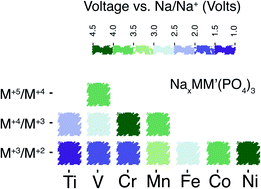
J. Mater. Chem. A, 2021,9, 281-292
https://doi.org/10.1039/D0TA10688G
Sustainable S cathodes with synergic electrocatalysis for room-temperature Na–S batteries
ZnS quantum dots and single Co atoms grown in N-doped carbon microparticles serve as multifunctional S hosts for sustainable Na–S batteries.

J. Mater. Chem. A, 2021,9, 566-574
https://doi.org/10.1039/D0TA08748C
All ceramic cathode composite design and manufacturing towards low interfacial resistance for garnet-based solid-state lithium batteries
Solution-assisted all-oxide-cathode formation method allows reduction of processing temperature without using sintering additives, demonstrating the lowest interfacial impedance in garnet-based solid-state lithium batteries.
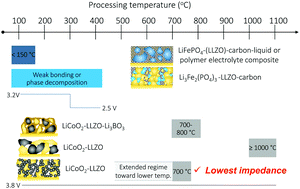
Energy Environ. Sci., 2020,13, 4930-4945
https://doi.org/10.1039/D0EE02062A
Investigating the effect of a fluoroethylene carbonate additive on lithium deposition and the solid electrolyte interphase in lithium metal batteries using in situ NMR spectroscopy
An in situ NMR study of Li deposition and the SEI on Li metal. Isotope exchange measurements reveal the fast transport properties in the SEI formed with FEC and the accelerated SEI formation rate, in part explaining the homogeneous electrodeposition using FEC additives.
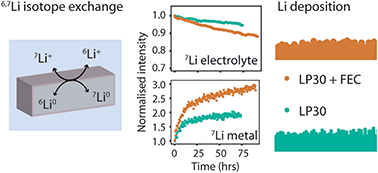
J. Mater. Chem. A, 2020,8, 14975-14992
https://doi.org/10.1039/D0TA05652A
High-energy and high-power Zn–Ni flow batteries with semi-solid electrodes
Careful rheological design and electrochemical optimization of conductive ZnO and Ni(OH)2 active semi-solid flowable electrodes is essential to achieve a high-energy and high-power Zn–Ni flow battery.
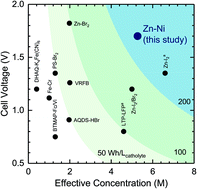
Sustainable Energy Fuels, 2020,4, 4076-4085
https://doi.org/10.1039/D0SE00675K
The effect of gallium substitution on the structure and electrochemical performance of LiNiO2 in lithium-ion batteries
Ga-doped LiNiO2 is reinvestigated. Ga is suggested to occupy the Li site. Detailed structural and electrochemical characterization is provided.

Mater. Adv., 2020,1, 639-647
https://doi.org/10.1039/D0MA00163E
A novel method for screening deep eutectic solvent to recycle the cathode of Li-ion batteries
Deep eutectic solvents (DESs), as a green alternative technology, exhibit great potential to recycle valuable elements from spent lithium-ion batteries (LIBs).
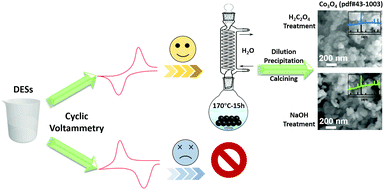
Green Chem., 2020,22, 4473-4482
https://doi.org/10.1039/D0GC00701C
Solvometallurgical recovery of cobalt from lithium-ion battery cathode materials using deep-eutectic solvents
Solvometallurgical recovery of cobalt from lithium cobalt oxide by using a choline chloride–citric acid deep eutectic solvent (DES) in presence of aluminium and copper current collectors.
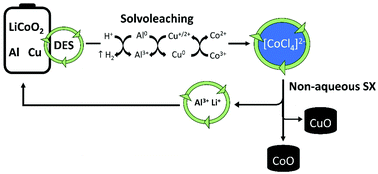
Green Chem., 2020,22, 4210-4221
https://doi.org/10.1039/D0GC00940G
Low-cost green synthesis of zinc sponge for rechargeable, sustainable batteries
We show that zinc (Zn) batteries are the lowest cost and most energy dense of rechargeable batteries that rely on abundant, low-risk elements. We advance Zn batteries with a green synthesis that lowers the cost and boosts the performance of rechargeable Zn electrodes.
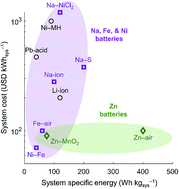
Sustainable Energy Fuels, 2020,4, 3363-3369
https://doi.org/10.1039/D0SE00562B
Highly stable Zn metal anodes enabled by atomic layer deposited Al2O3 coating for aqueous zinc-ion batteries
Nanoscale Al2O3 coating by an atomic layer deposition technique enabled safe and dendrite-free Zn anodes for rechargeable aqueous zinc-ion batteries.
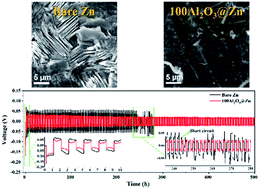
J. Mater. Chem. A, 2020,8, 7836-7846
https://doi.org/10.1039/D0TA00748J
Nanostructured potassium–organic framework as an effective anode for potassium-ion batteries with a long cycle life
Novel nanostructured non-redox-metal potassium metal–organic framework, [C7H3KNO4]n, as an effective organic anode for long-cycle life OPIBs.
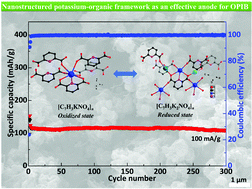
Nanoscale, 2020,12, 7870-7874
https://doi.org/10.1039/D0NR00964D
Hierarchical Co3O4 nanorods anchored on nitrogen doped reduced graphene oxide: a highly efficient bifunctional electrocatalyst for rechargeable Zn–air batteries
The electrocatalytic activity of the N-rGO/Co3O4 nanocomposites was tuned towards highly efficient bifunctional air-cathodes for Zn–Air batteries.
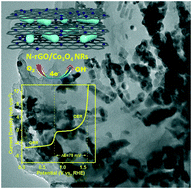
Catal. Sci. Technol., 2020,10, 1444-1457
https://doi.org/10.1039/C9CY02183C
High-performance room-temperature sodium–sulfur battery enabled by electrocatalytic sodium polysulfides full conversion
Developing novel gold nanoclusters as an electrocatalyst can facilitate a completely reversible reaction between S and Na, achieving advanced high-energy-density room-temperature sodium–sulfur batteries.
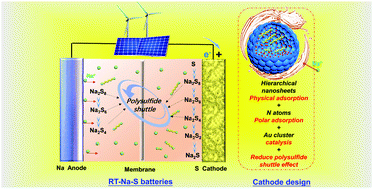
Energy Environ. Sci., 2020,13, 562-570
https://doi.org/10.1039/C9EE03251G
A dual-salt coupled fluoroethylene carbonate succinonitrile-based electrolyte enables Li-metal batteries
We report a novel succinonitrile (SN)-based electrolyte SN–DLi–FEC (SN–LiTFSI–LiODFB–FEC), which shows excellent compatibility with the Li-metal anode.
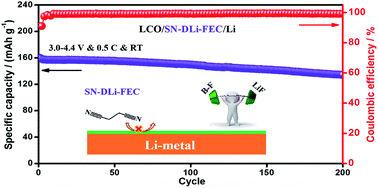
J. Mater. Chem. A, 2020,8, 2066-2073
https://doi.org/10.1039/C9TA11341J
Boosting the ionic conductivity of PEO electrolytes by waste eggshell-derived fillers for high-performance solid lithium/sodium batteries
Poly(ethylene oxide) (PEO)-based polymer electrolytes are extensively investigated, and they have rapidly developed in all-solid-state batteries (ASSBs) over recent years for their good interface contact with electrodes, easy shaping and decent flexibility.
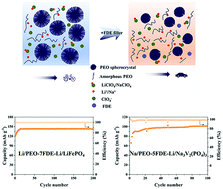
Mater. Chem. Front., 2021,5, 1315-1323
https://doi.org/10.1039/D0QM00541J
Cu2Nb34O87 nanowires as a superior lithium storage host in advanced rechargeable batteries
Cu2Nb34O78 nanowires present a high charge capacity of 279.8 mA h g−1 with a Coulombic efficiency of 89.6% based on Nb5+/Nb4+, Nb4+/Nb3+ and Cu2+/Cu+ redox couples.
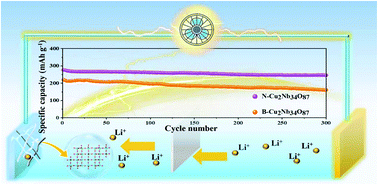
Inorg. Chem. Front., 2021,8, 444-451
https://doi.org/10.1039/D0QI01075H
NH4V3O8·0.5H2O nanobelts with intercalated water molecules as a high performance zinc ion battery cathode
NH4V3O8·0.5H2O nanobelts are synthesized by a low-temperature hydrothermal process, and exhibit high electrochemical performance in ARZIBs.
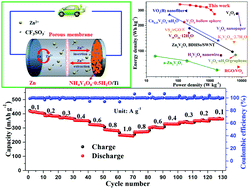
Mater. Chem. Front., 2020,4, 1434-1443
https://doi.org/10.1039/D0QM00051E
About this collection
This collection showcases recent battery focused research published by Royal Society of Chemistry journals.
Batteries are ubiquitous in our everyday lives and have become a critical enabling technology for modern electronics and clean energy utilization. As technological progress advances, the challenges for next-generation batteries have never been more significant including: better performance, lower cost, use of less limited resources, sound concepts for recycling, and production with a lower environmental footprint. These challenges cannot be tackled solely by conventional material science & engineering but will also need to capitalize on digitalization and circular material design.
In support of the 26th United Nations Climate Change Conference of the Parties (COP26) in Glasgow on 31 October – 12 November 2021, the RSC are hosting a series of online events on chemical science’s key role in tackling sustainability, exploring challenges, opportunities and inspirational stories from across our global chemical science community. Find out more about the batteries and energy storage focused events at https://www.rsc.org/new-perspectives/sustainability/cop26/#batteries.
In support of our “Battery science and technology: going digital and going green” symposium, chaired by Professor Volker Presser and featuring a panel who discuss the perspectives, challenges, and opportunities for next-generation battery research and the ramifications for battery production, this collection highlights some of the exemplary recently published research contributing to our progress in battery science and technologies.
We hope you enjoy the collection and welcome you to submit your own battery research to our journals.